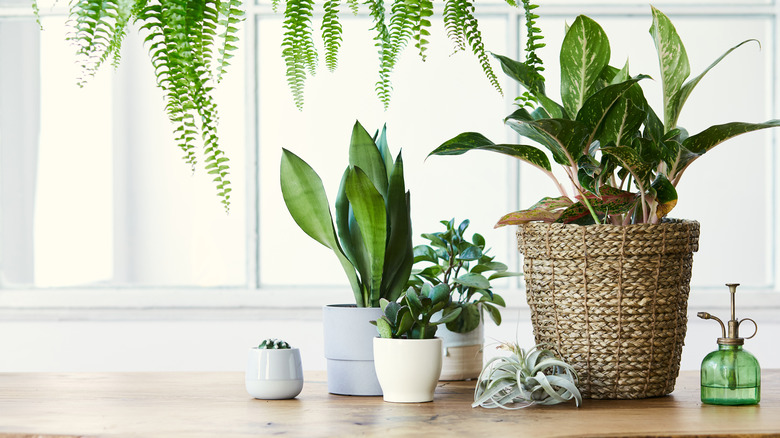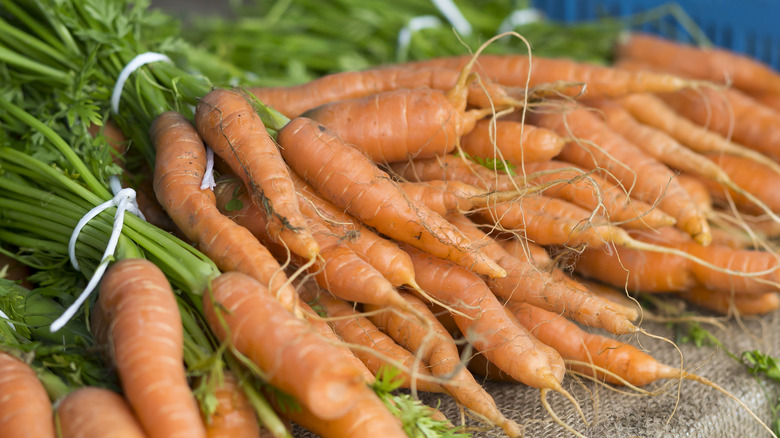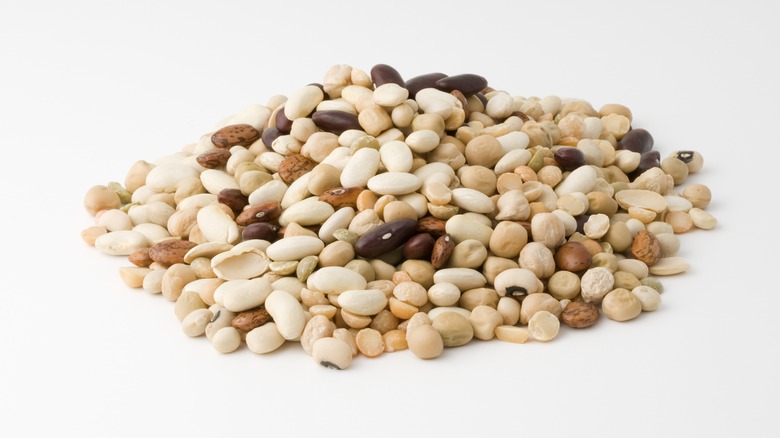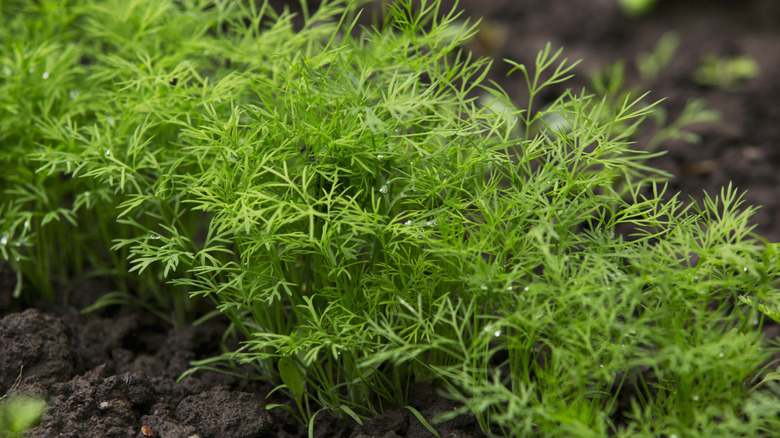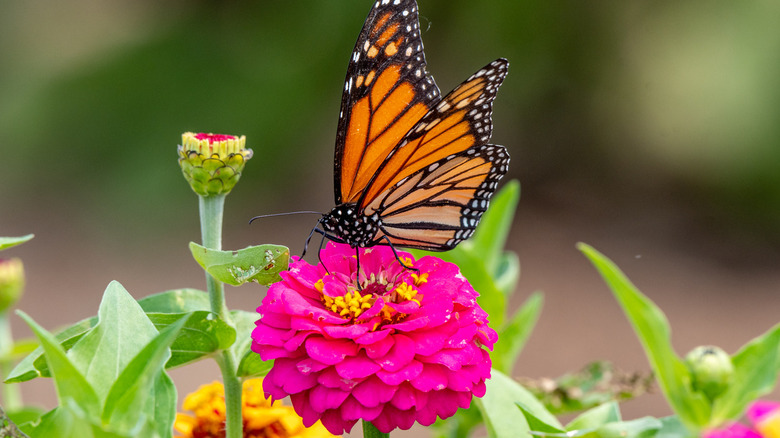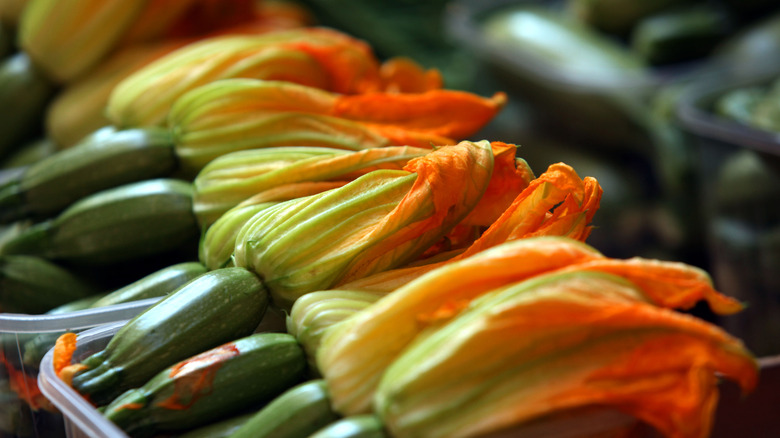5 Plants That You Shouldn't Start Growing Indoors
So you've got the gardening bug and want to start growing your own plants. While it can be just as easy as buying seeds, filling a pot with good soil, and watering consistently, every plant is different, with varying needs in order to flourish. Let's Talk Science breaks down the five things all plants need: water, light, air, nutrients, and proper growing locations. While all of those things can be done anywhere, there is a difference between outdoors and indoors; who knew?
If you take a look at any seed packet, it'll describe the most suitable growing conditions, giving you the best way for new plants to thrive. If you've got an outdoor space where you'd like to grow some plants, we've got a quick guide on varieties you shouldn't start growing indoors. From easy-to-grow vegetables to flowers to herbs, we can help set your plants up for success. Let's dive into our top outdoor picks!
1. Carrots
Root vegetables like carrots really shouldn't be grown indoors because it can be very hard to make the transfer outside. According to the University of California Agriculture and Natural Resources, when transplanting carrots outdoors, you risk harming the root, which can damage the vegetable. After all the work of purchasing seeds, planting them in a container indoors, and giving them lots of water and light, it would be a shame to destroy your hard work when moving them to a new home.
Instead, plant the seeds shallowly in direct soil outside (whether in a pot or the earth) and water them gently and consistently until they start to sprout, according to West Coast Seeds. Just because they are better grown outdoors does not mean you can't plant them in a container, especially if you don't have adequate outdoor space. A beautiful pot that is size-appropriate, so the carrots have room to grow, would work just as well.
2. Beans
Many types of beans, from lima beans to green beans, are perfect for a vegetable garden. These legumes are better started outdoors as well, but for different reasons than that of carrots. According to Our Stony Acres, beans mature incredibly quickly, around 60 days, and then they are ready to be harvested. Because of that, there is no reason to start germinating beans indoors as they are fast growers. In addition, the roots are super thin and delicate, so transplanting them can be damaging.
Instead, grow them directly into the soil outdoors for the best outcome. Plant deep in the ground a couple of inches apart and consistently water until they sprout. Watering bean plants in the morning helps them dry out quickly, minimizing the risk of fungal growth. We like planting pole beans as they take up less space and are easier to pick once mature; all good news for small patios or those with limited outdoor space as they grow upwards and look pretty in a garden.
3. Dill
Dill is a culinary herb that gives fantastic flavor to all kinds of wonderful dishes, either with its stalk or fronds. They are tall and thin and can grow pretty rapidly in the right conditions. Dill is one of the plants we suggest growing outdoors for them to thrive at their full potential. The herb does not transplant well from indoors to outdoors, so it's best to plant outside starting from seed.
According to the University of Minnesota Extension, the most important thing is to make sure they have enough direct sunlight to thrive. Dill needs about 6 hours of direct sun daily to grow healthy and happy. Plant seeds about an inch deep into the soil, 2 feet apart. Once they start to sprout and get tall, start thinning them (or prune and use them!) to avoid overcrowding. Make sure to keep it consistently moist and pay attention to any weeds that may grow as well.
4. Zinnias
Zinnias are beautiful flowers that offer so many benefits when growing outside. Not only do they add a bright pop of color, but these flowers are also a plant that repeatedly blooms without much maintenance, which is great for amateur gardeners. They are lovely pollinator attractor plants for bees, hummingbirds, and butterflies, which is why these flowers would work nicely in a vegetable garden, according to Simple Garden Life. Imagine a tomato plant fanned by the bright purple and pink habit of zinnias!
While you can grow them indoors, zinnias thrive best in direct soil outdoors, so we recommend doing just that. Make sure to keep them watered while they are growing for the optimal outcome. Once they are established, you can ease off the watering a bit as they will bloom and grow on their own. A big tip is to be sure to prune them and cut the flowers, so they will continue to produce more beautiful blooms over time.
5. Squash
Squash is an easy and versatile vegetable to plant in an outdoor garden and can thrive in containers on a patio or balcony. It grows quickly without much maintenance, which is why it is best planted outdoors from the start. Squash is recommended outdoors because of its direct sunlight requirements — plus, it offers beautiful blooms!
According to Hobby Farms, you can grow squash either from seeds or transplants, with the former being the most economical. Growing squash from seeds makes them more susceptible to pests, though, which must be addressed. However, they are more likely to grow big and healthy if their environment isn't altered. On the other hand, buying an established squash plant gives you a headstart on vegetable harvesting, but the plant can also resent being moved from its original home. Whichever vegetable, herb, flower, or plant you decide to add to your garden, there are growing conditions that will give you the best outcome. Happy gardening!
